Today on my morning walk, I came across a curious bush with very showy fruits. The contrasting colors of its green leaves, orange fruits, and purplish flowers made me approach it to take some nice pictures.


This is a shrub that all year round is full of green leaves. In the autumn and winter seasons, it goes unnoticed. It is part of the green landscape. However, in spring it blooms and dresses in bright colors. Many butterflies and bees are seduced by its showy flowers.
The scientific name of this shrub is Duranta erecta Linn but the name Duranta repens is also accepted. In various localities, it is given a colloquial name based on the shape of its fruits or flowers. It can be named with curious names such as golden dewdrop, golden beads, dove berry, sky flower, or angel's whisper.
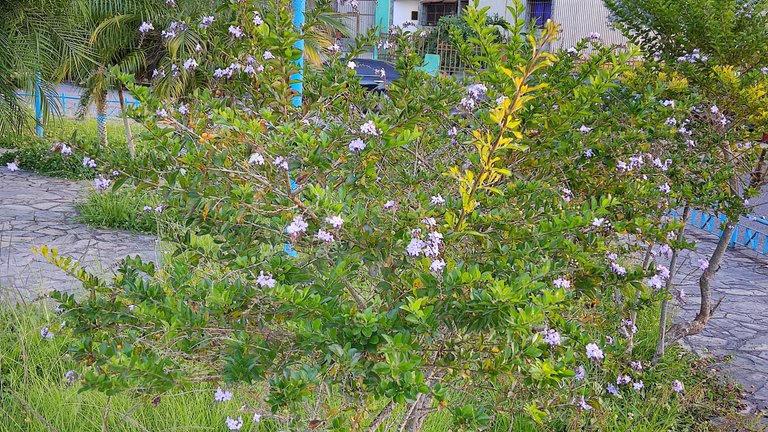
Duranta erecta Linn can grow up to 5 meters tall. It is found in the wild as part of thickets or planted in urban sites as part of the ornament.
This shrub grows in tropical and subtropical climate zones. It is native to Central America (Mexico), extending through the Caribbean to South American countries such as Brazil, Venezuela, and Colombia. It is a shrub that has been introduced in territories as distant as the South Pacific Islands, Australia, China, India, Nigeria, Egypt, and Hawaii. It is a plant that needs a lot of sun, temperatures around 25ºC, good relative humidity, and well-drained soils.
| Taxonomic Category | Rating |
|---|---|
| Kingdom | Plantae |
| Phylum | Tracheophyta |
| Class | Magnoliopsida |
| Order | Lamiales |
| Family | Verbenaceae |
| Genus | Duranta |
| Species | D. erecta |
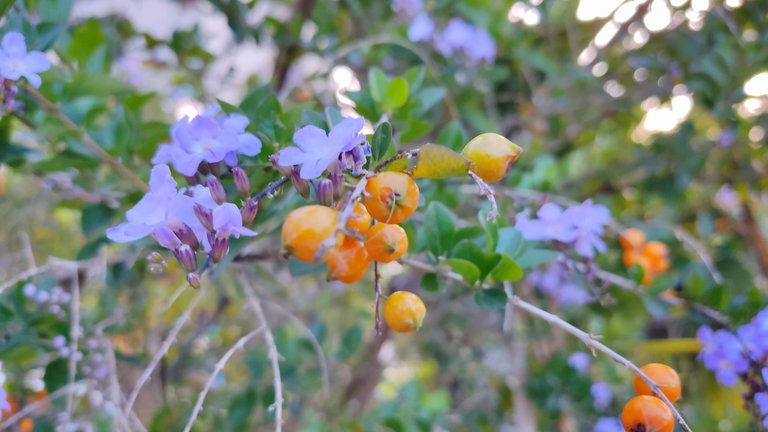

The flowering process of this shrub is something worth seeing. The flowers of Duranta erecta Linn are seen together on the terminal part of some branches. Their initial structure is of small buds with elongated, deep purple bracts.
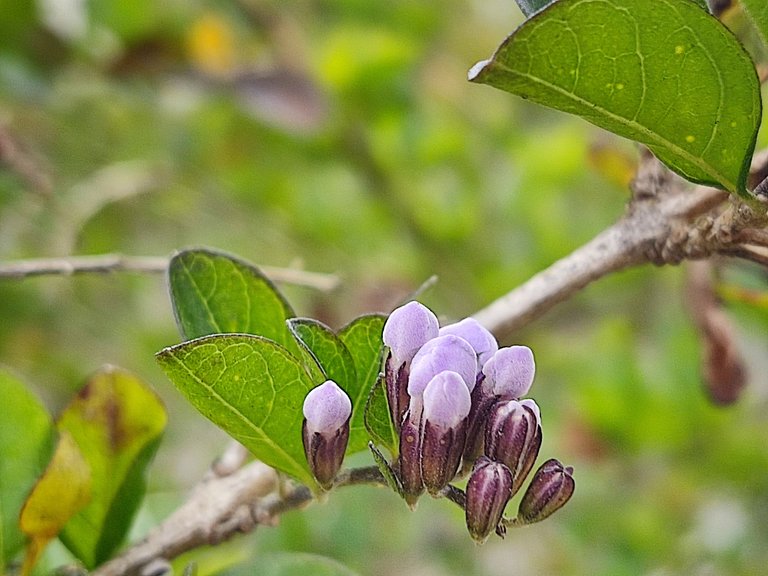
There are about 10 varieties of the species Duranta erecta Linn according to the color of their flowers. Some of them can be blue, lavender, and white (2). The flowers of the shrubs I photographed are lavender with 5 petals that blend harmoniously with their deep green leaves with extended blades and spearhead.
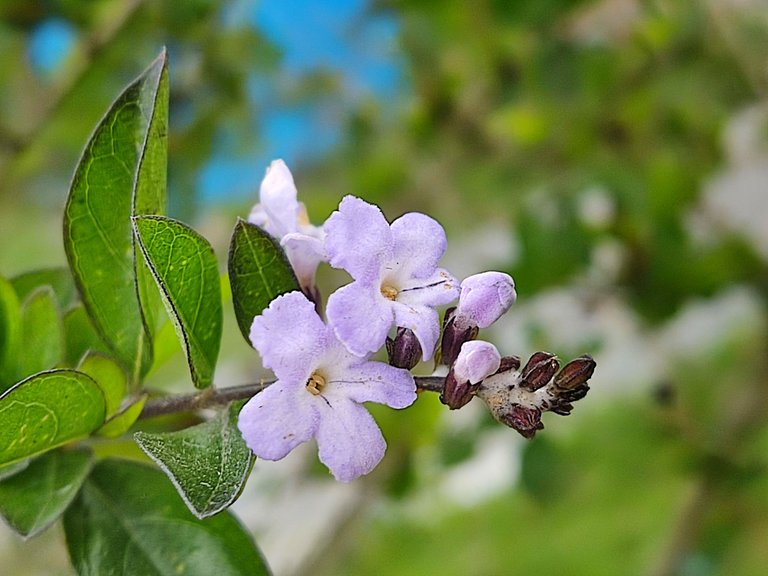
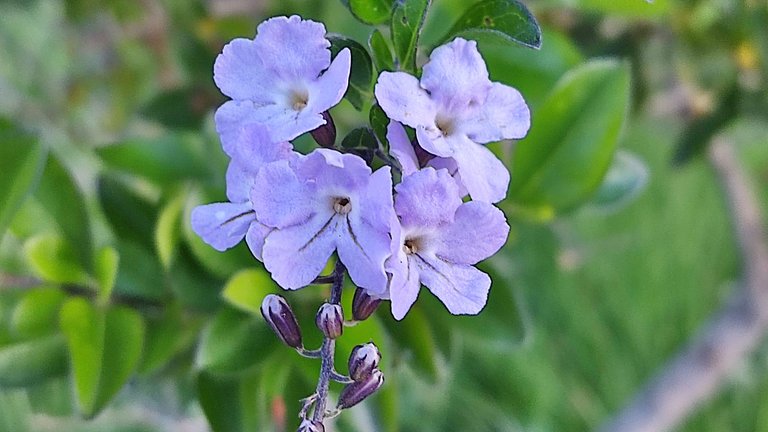
The petals of these flowers are very thin and delicate. A few days after blooming, they wither.
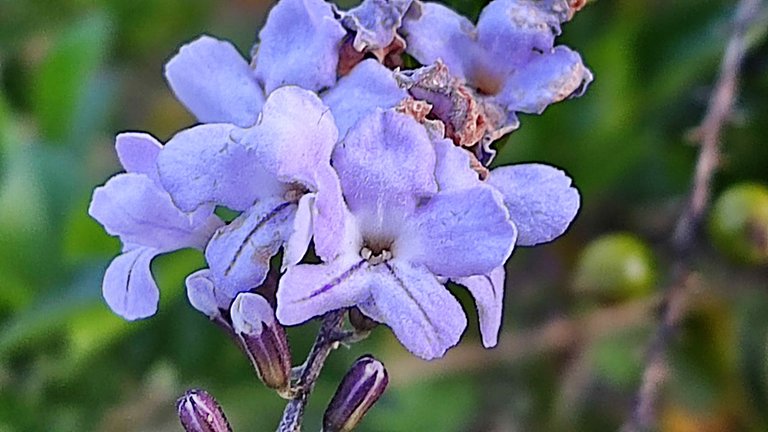
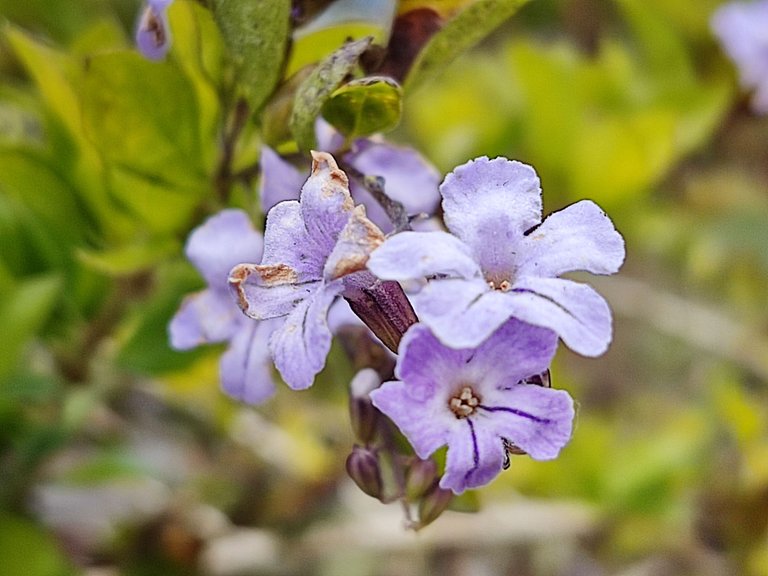

The fruits of Duranta erecta Linn are round, shiny, yellow-orange colored, characteristics that make them very striking. These fruits are not edible as they contain hydrocyanic acid.
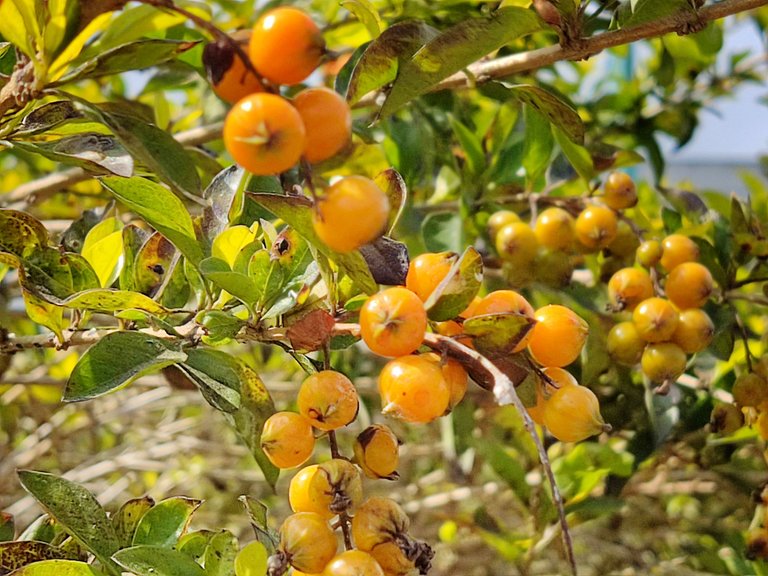
For those who do not know much about this shrub, its fruits can represent a danger because they resemble a type of edible berries such as Physalis peruviana L. It is a berry belonging to the Solanaceae family (tomato, potato). Physalis peruviana L. is native to Peru and is known as golden berry, uvilla, or uchuva,
If you look closely at the photo above and below, they look very similar, except that the fruit of Duranta erecta Linn ends in a point. It is not completely round.
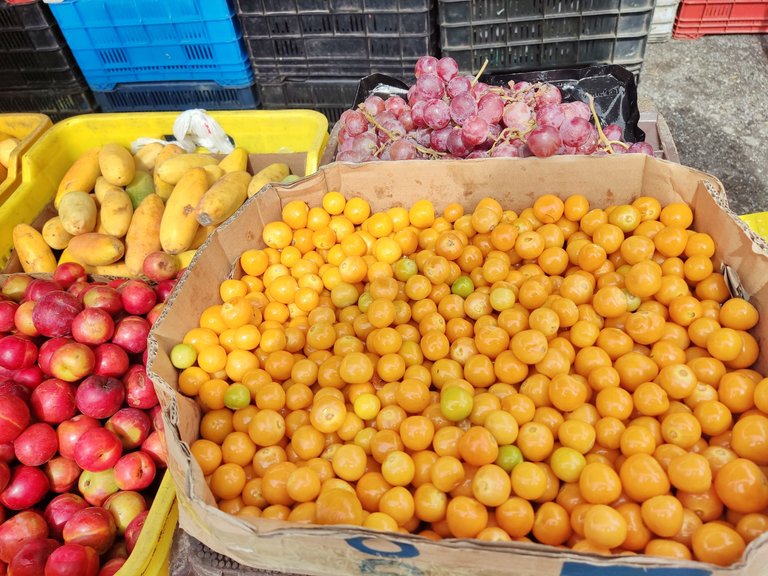
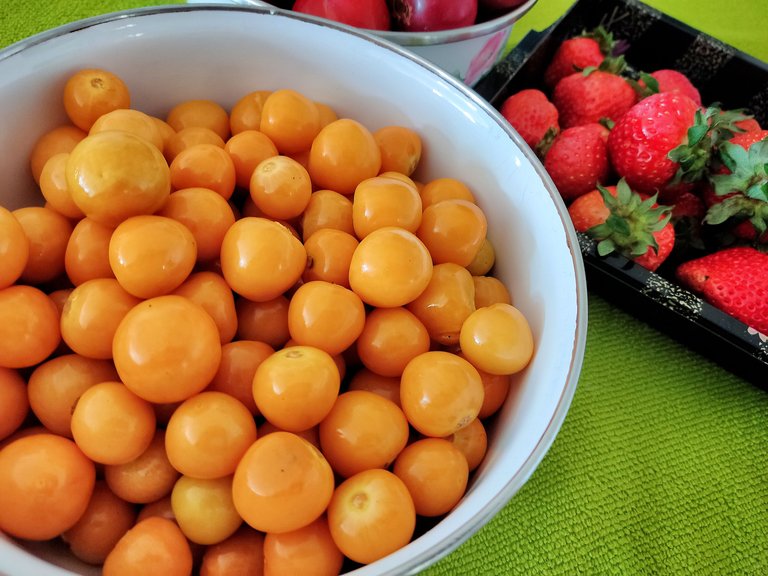
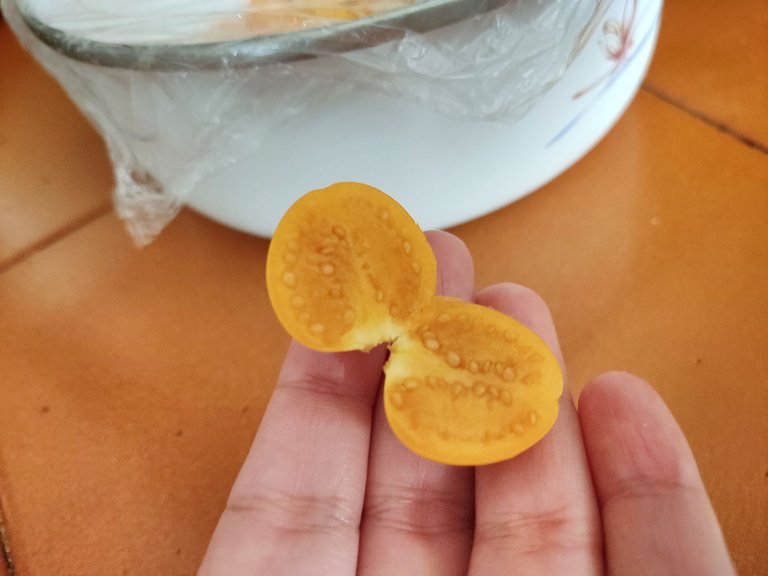
Physalis peruviana L. is a juicy and sweet berry. If it is confused with the fruit of Duranta erecta Linn and consumed, it can be toxic (men, dogs, and cats). If it is a child or small pet, it can cause death because its body volume is small, and a minimum dose of hydrocyanic acid can be lethal.

When the fruit of Duranta erecta Linn emerges, it is green and looks like small guava.
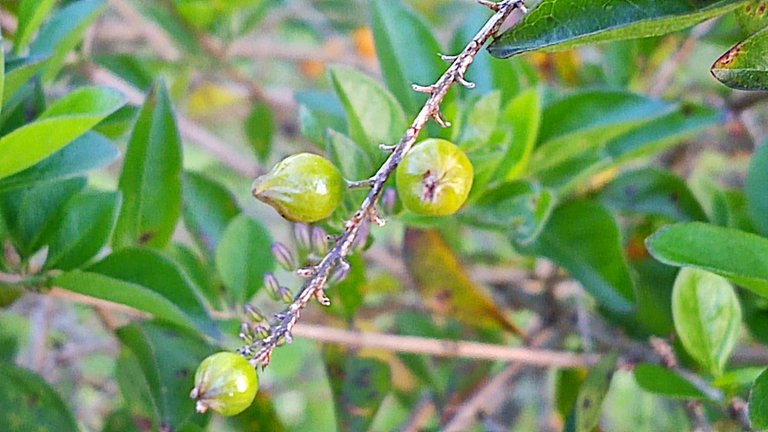
As time goes by, this fruit changes to a yellow color.
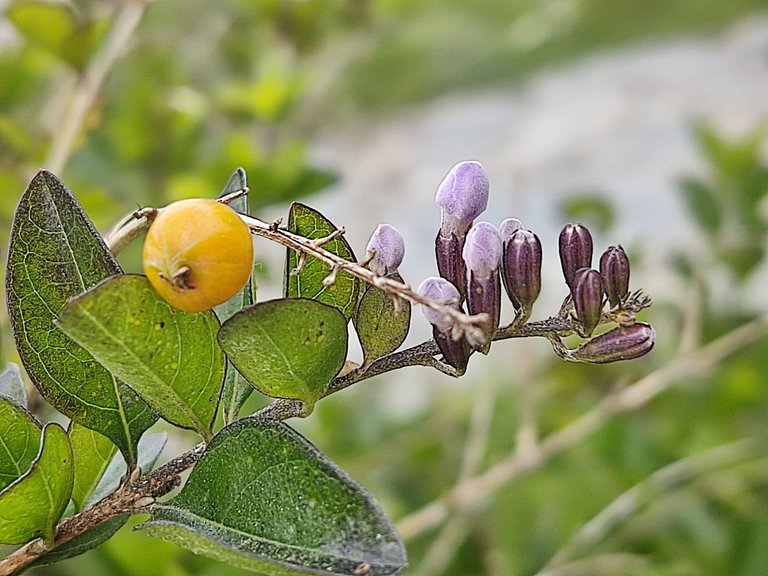
When the fruit is fully ripe, it is bright orange-yellow. It is fleshy and has 2 to 8 seeds. It is a drupe.

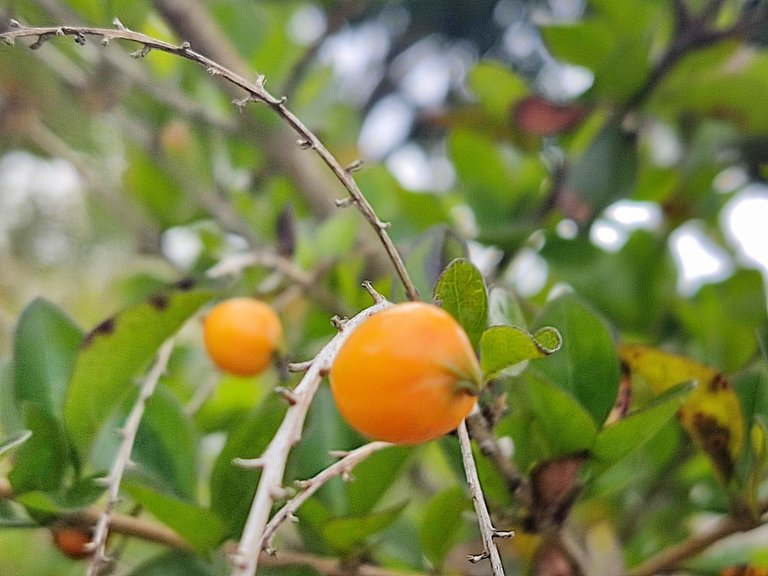
Although the fruits are toxic to humans, this shrub has bioactive components of pharmacological interest.
In some countries, such as China, various parts of this plant (stems, leaves, fruits, roots) are used medicinally to treat abscesses. Traditional medicine in Bangladesh and Nigeria uses it as an anthelmintic and antimalarial (3).
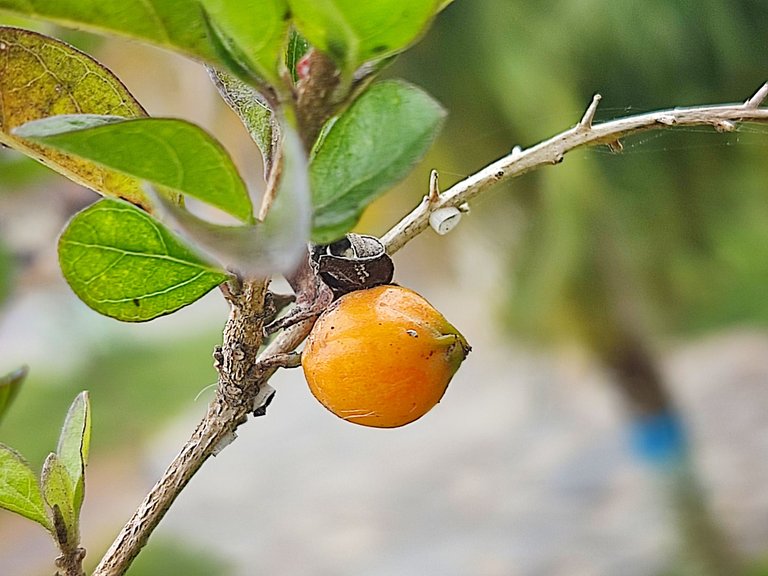
There are many studies with encouraging results in the pharmaceutical area on the bioactive substances of this plant, some of them with cytotoxic activity, others with antiviral action for hepatitis A, and others with antibacterial action for Proteus mirabilis, Bacillus subtilis, Salmonella typhi, and Boletus aereus. (4).
It remains to demonstrate the scientific efficacy of medicines made from the phytoconstituents of this shrub. If so, Duranta erecta Linn can be a great ally to obtain extracts of natural origin to treat diseases that affect human health.
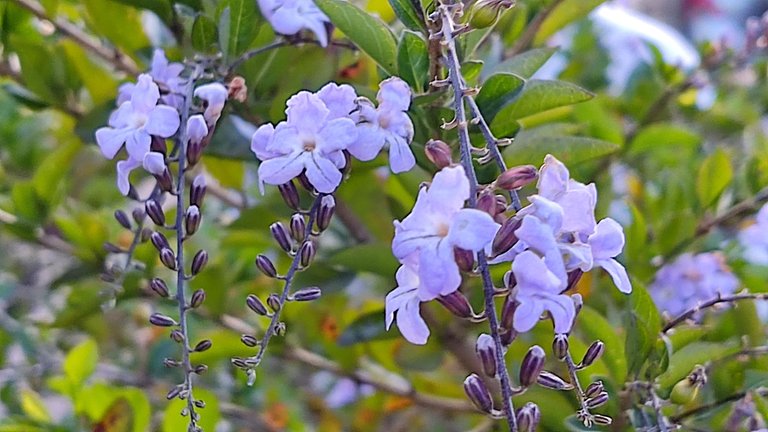
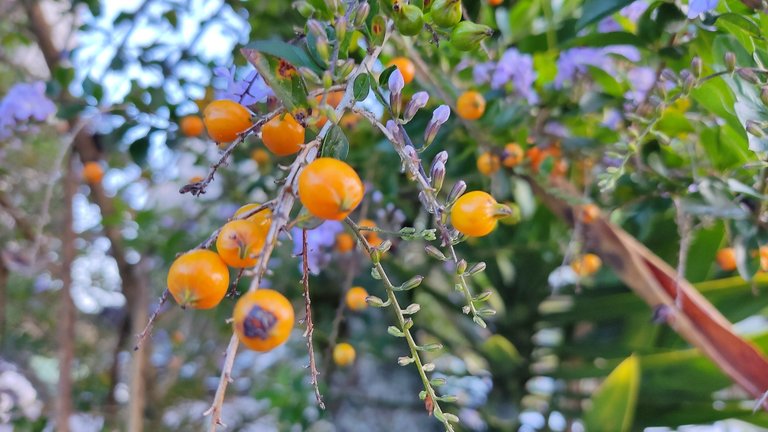
References:
(1) An Updated Review on Phytochemical Properties of “Golden Dewdrop” Duranta erecta
(2) Sus flores son azules y atraen mariposas: Duranta erecta

All images are property of the author edited with Snapseed
(Camera cell phone: POCO X3 Pro, Xiaomi)
The author's original text in Spanish was translated into English using DeepL


The rewards earned on this comment will go directly to the people( @chaodietas ) sharing the post on Twitter as long as they are registered with @poshtoken. Sign up at https://hiveposh.com.
nice post
We appreciate your work and your post was manually curated by @none! from the DNA team!
Reach us on Discord to learn more about the project!
Thanks for your support!
@chaodietas, while I was reading, I thought of cape gooseberry because of its resemblance and I was amazed by what you say that it can be lethal. Thanks for sharing this information, it is a way to recognize and differentiate these fruits that look alike. Here in Bogota I tried cape gooseberry and I loved it, it is one of my daily fruits. Greetings, a hug.
Hi @aurodivys,
My husband loves this fruit. He can eat a pound in one sitting. For this reason when I saw the fruit on the bush, I mistakenly thought I had gotten cape gooseberry from the wild. Good thing I don't like to pluck leaves or fruit from trees because I would have been in for a nasty surprise. The pointed end made me look up the shrub on Google Lens and I found that my find was Duranta erecta.
Thanks so much for stopping by! Blessings.